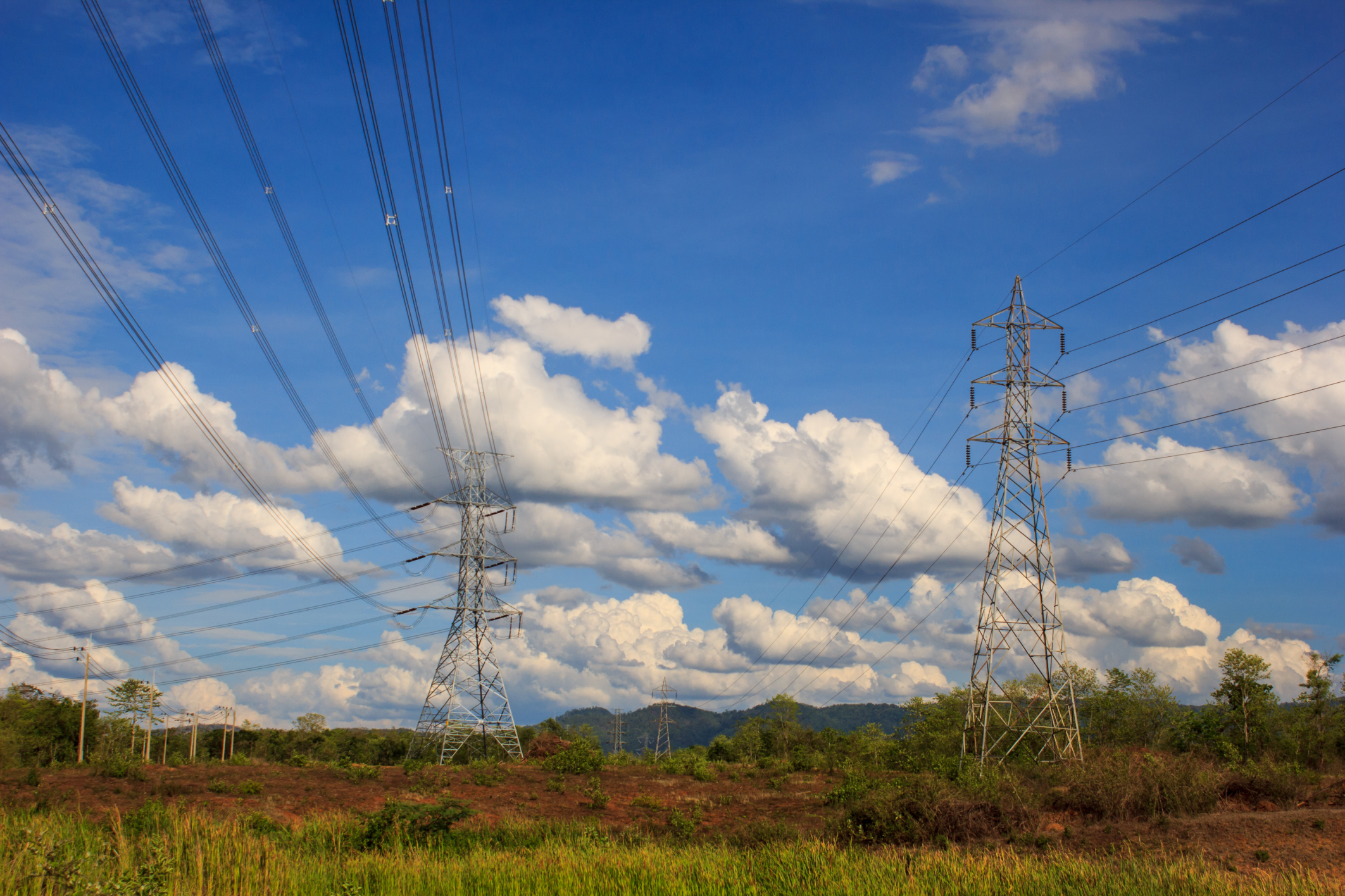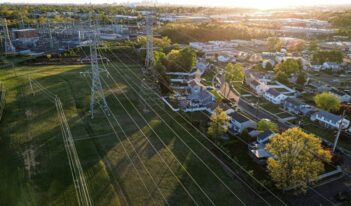
Legal scholars argue that the Constitution requires states to consider regional energy needs.
Demand for renewable sources of electricity is rising, and the need for more power lines to carry renewable energy is at an all-time high. But construction of these much-needed lines is sometimes blocked by “pass-through” states that neither generate nor consume the renewable electricity transmitted across their borders. In a recent paper, the University of Minnesota’s Alexandra Klass and Vanderbilt University’s Jim Rossi argue that an unwritten constitutional rule known as the dormant Commerce Clause should keep pass-through states from blocking the construction of new power lines and thereby undermining the development of renewable energy projects.
Last year, renewable sources accounted for thirteen percent of America’s electricity. This number is rising rapidly as state and national governments seek to diversify energy sources, secure cheap and reliable electricity, and address climate change.
But to take advantage of renewable energy, the United States needs to transport power through high-voltage lines that cross state borders. Most wind power comes from the Great Plains region, while most solar power comes from southwestern deserts. Power lines carrying electricity from these regions to the nation’s population centers must cross one or more “pass through states.”
Pressure from property owners, environmental groups, and in-state utilities, coupled with a lack of obvious in-state benefits, regularly leads “pass through” states to block multi-state energy infrastructure projects.
States block these projects in one of three main ways, say Klass and Rossi. First, when reviewing and approving power line construction based on “need,” some state public utility commissions, including that of Arizona, only consider in-state needs.
Second, when deciding whether to use eminent domain authority to take private property to support large infrastructure projects, some states, including Missouri, narrowly define “public use” in a way that excludes pass-through transmission lines.
Finally, at least six states explicitly prohibit out-of-state merchant transmission lines – frequent carriers of pass-through renewable electricity – from applying for or challenging siting permits. Others, including Arkansas, exploit various additional regulatory ambiguities to do the same.
Out-of-state developers, say Klass and Rossi, can use litigation under the Commerce Clause of the U.S. Constitution to stop state regulators from rejecting power line construction in these ways.
The Commerce Clause granted the federal government the authority to regulate goods and services that cross state lines. But even when Congress hasn’t regulated, the clause – in what lawyers call its “dormant” sense – prohibits states from passing laws that apply within their own borders in such a way that obstructs the flow of goods through the country. According to Klass and Rossi, the clause not only allows but actually requires states to consider regional infrastructure needs when making power line siting decisions.
The dormant Commerce Clause, they argue, represents the most feasible way to require regional cooperation because the Federal Energy Regulatory Commission (FERC), national regulator of the power grid, has not been given the authority to approve the construction of power lines in multi-state projects. Although FERC does control rates and requires that certain energy generators be allowed access to the grid, approval of construction still rests with individual states. In light of today’s political climate, congressional expansion of FERC’s regulatory abilities seems unlikely. Bargaining among the states, too, offers little promise due to holdouts and the high stakes involved.
Klass and Rossi believe out-of-state developers subjected to discrimination should bring lawsuits challenging state policies that undergird individual project rejections. Challengers can claim that a state policy discriminates against out-of-staters outwardly, intentionally, or in effect, requiring the state to show that the law was passed for a “legitimate, non-protectionist purpose” and that no “less discriminatory” options existed. Alternatively, a challenger might argue the challenged policy’s harm to regional needs greatly outweighs the supposed benefits to the state. Klass and Rossi argue that numerous existing state laws and regulations would not survive these attacks.
For example, Klass and Rossi say that dormant commerce clause principles require that a state grant eminent domain authority on terms equal to both in- and out-of-state developers. Although the Supreme Court requires judicial deference to state eminent domain decisions, Klass and Rossi argue that narrow definitions that favor in-state interests remain vulnerable to dormant commerce clause challenges. They note that the Court has not yet considered a dormant Commerce Clause challenge to an eminent domain decision involving a multi-state energy project.
Klass and Rossi also provide advice to state regulators who hope to avoid lengthy court battles. They urge these officials to base their decisions on cost-benefit analyses that give serious consideration to both in-state and out-of-state impacts.
Klass and Rossi argue that judges should then evaluate these cost-benefit analyses to see whether state and local regulators did in fact pay attention to regional power and energy needs. The courts’ role, they say, should be to ensure that in- and out-of-state companies enjoy a level playing field in state proceedings involving interstate infrastructure projects.



